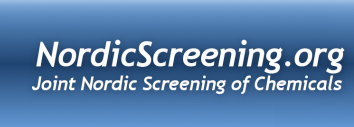
What’s new?
Report
A report on the screening of compounds in tire wear road run-off has been published!

Road run-off and associated snow, water recipient and sediment/soil samples were collected in six Nordic countries in spring/summer 2023 and analysed for the presence of 15 tire related chemicals including antioxidants/antiozonants, transformation products and a crosslinking agent. Additionally, 20 blue mussel samples were analysed, summing up to a total of 87 samples. Tire related chemicals were found in 98% of samples.
Head over to the Reports part or click here!
Seminar

On 16th of November 2023 the Nordic Screening Group held a seminar on chemical additives in plastics as an environmental concern in the Nordic countries with the goal to exchange information. Speakers from different backgrounds were invited, f.ex. from agencies, universities, NGOs, recycling industry and non profit research institutes. Presentations and the agenda for the workshop can be found on our website!
Head over to the Seminar and Workshops part or click here!
About Nordic Screening
There are approximately 100.000 different chemical substances in use within the EU borders. We know that some of these are very hazardous and pose a risk to the environment. However, for the vast majority of substances, we simply don’t have the knowledge to decide whether they pose a risk to the environment at the present time or maybe will do so in the future. To better understand such risks, one important first step is to measure these chemicals in the environment, to see whether they can be detected in water, soil or in living organisms. If the substances are persistent, bioaccumulative or toxic (PBT), they are regarded as hazardous. Substances with known hazardous properties are to a large extent regulated and included in national monitoring programs in the Nordic countries.
The aim of the Nordic environmental screening is to obtain a snapshot of the occurrence of potentially hazardous substances, both in regions most likely to be polluted as well as in some pristine environments. The focus is on less known, anthropogenic substances and their derivatives, which either are used in high volumes or are likely to be persistent and hazardous to humans and other organisms.
The group is a subgroup under the Nordic Working Group for Chemicals, Environment, and Health (NKE) and funded by the Nordic Council of Ministers. Further information can be found here.